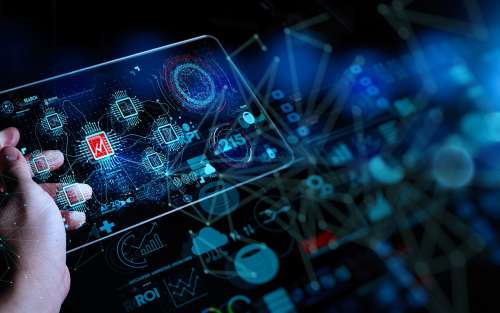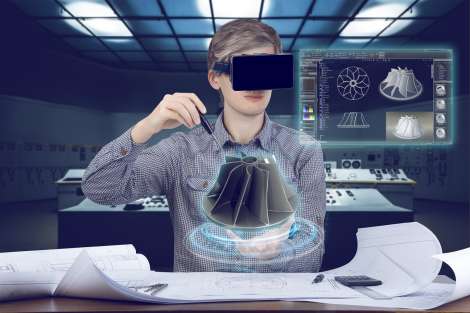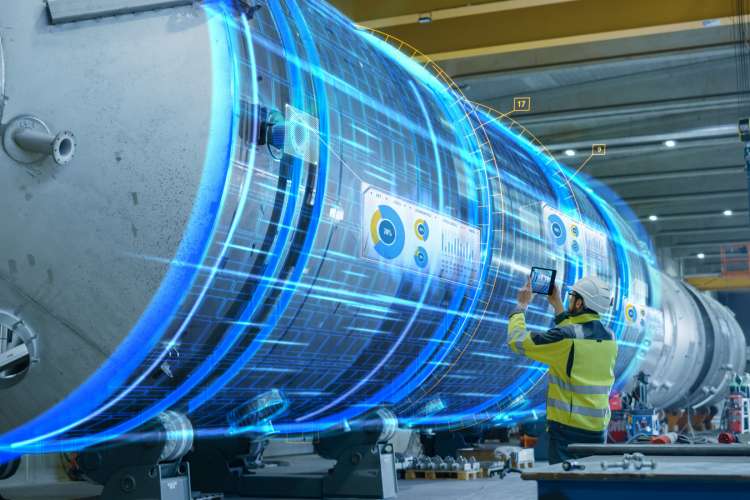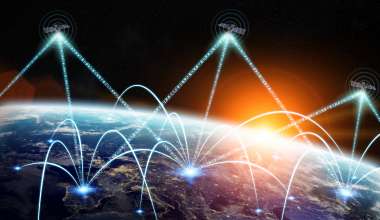The onset of the COVID-19 pandemic led to a virtually overnight shift in the way The Aerospace Corporation does its work.
While the disruption presented initial challenges, it also accelerated the digital transformation already underway at the company, creating a real-world laboratory to explore the collaborative tools and technologies across our enterprise that will increasingly shape the future of work. Already, the use of new tools and technologies has enabled a significant portion of the workforce to work effectively in remote and virtual settings, with as much as 75 percent of the company teleworking on a full-time basis at various points in 2020.
From supporting rocket launches with new remote tools to finding new ways for our laboratories to collaborate digitally to hosting technical workshops and reviews in virtual formats, Aerospace proved it can continue delivering on its mission no matter the circumstances.

“With huge improvements in IT, collaborative tools, and smart workplace technologies, we have the exciting opportunity to revolutionize and reimagine how we operate and share information in a way that enables us to effectively work from anywhere,” said Aerospace President and CEO Steve Isakowitz. “We can transform our focus from a brick-and-mortar to a digital future and spark a new era of innovation.”
To build on the lessons learned from the past year, Aerospace has embarked on an effort to envision how its future workforce will operate and the tools, training and support they’ll need to accomplish their mission. This initiative is the latest in a long line of enterprise planning exercises regularly conducted by Aerospace to ensure a resilient, agile operation capable of adapting to evolving mission requirements.
Under the leadership of the Workplace of the Future (WOTF) task force, Aerospace employees are imagining a future where technologies like virtual reality, high-performance computing, artificial intelligence and smart facilities create new opportunities for where and how work gets done. Their early work has studied how Aerospace’s facilities can be adapted to be more flexible and reconfigurable, while still ensuring the safety of our workforce and security of our information. Longer-term, their findings will inform key strategic decisions and priorities involving future enterprise planning.
“As we look into the future, we want to think about what that workplace might look like and what we need to do to get there” said Chuck Gustafson, Senior Vice President and task force chair. “We have to set ourselves up to make the decisions and investments to capitalize on new technologies and empower our future workforce.”
State-of-the-art facilities will mean little without the talented personnel who work in them, and Aerospace’s efforts are also focused on how to maintain its mission-driven culture and foster innovation, even when teams are spread across facilities around the country. Access to tools, data, computing resources and laboratory equipment will need to be seamless and consistent regardless of the location where work is happening.

Aerospace’s Workplace of the Future planning is complemented by a parallel initiative launched this year to enhance the corporation’s efforts to strengthen its talent pipeline and workforce. Aerospace’s efforts, which include 34 targeted actions across six focus areas, seek to foster a workplace environment where employees can bring their best selves to work in order to deliver the innovative solutions needed by its customers.
The enhanced workforce initiatives are one of several ways Aerospace is investing to recruit, develop and retain the brightest minds. Together, these efforts and those of the Workplace of the Future task force will position the company to be a workplace of choice for top talent, including the emerging generation of digitally-native scientists and engineers that will make up our future workforce.
While what, exactly, the future of work will look like remains uncertain, Aerospace will be prepared to adapt to whatever comes next, with the tools, technology and people to solve the space enterprise’s hardest problems.
“Innovation occurs when we have different people with different perspectives and different backgrounds coming together to solve hard problems,” said Isakowitz. “Through these efforts, we’re setting a path to build a resilient, agile workforce that will be able to fully utilize the new tools, technologies and facilities of our workplace of the future.”





